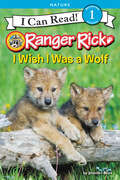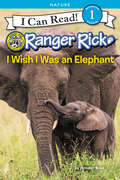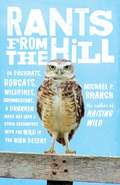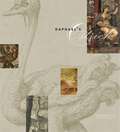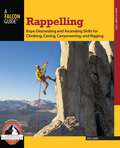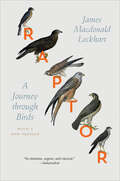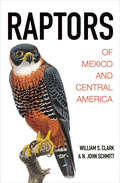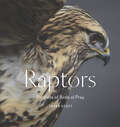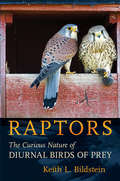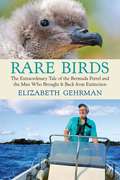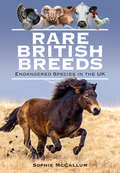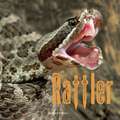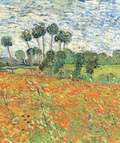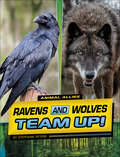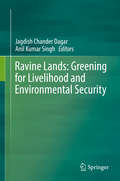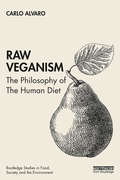- Table View
- List View
Ranger Rick: I Wish I Was a Wolf (I Can Read Level 1)
by Jennifer BovéExplore the lives of wolves with Ranger Rick in this beginning reader with full-color photos of wolves in the wild! What if you wished you were a wolf and then you became a gray wolf pup? Could you play like a pup? Talk with howls and growls? Live with a wolf pack? And would you want to? Find out!Ranger Rick explorers can learn all about wolves in this reader full of fascinating facts, vivid wildlife photographs, a Wild Words glossary, and a paws-on activity that teaches kids how to talk like a wolf! Ranger Rick, the iconic raccoon ambassador from Ranger Rick magazines, asks questions like: How do you practice being a grown-up? Ranger Rick: I Wish I Was a Wolf is a Level One I Can Read book, which means it’s perfect for children learning to sound out words and sentences. Whether shared at home or in a classroom, the short sentences, familiar words, and simple concepts of Level One books support success for children eager to start reading on their own.
Ranger Rick: I Wish I Was an Elephant (I Can Read Level 1)
by Jennifer BovéExplore the lives of elephants with Ranger Rick in this beginning reader with full-color photos of elephants in the wild!What if you wished you were an elephant and then you became one? Could you talk like an elephant? Sleep like an elephant? Live in an elephant family? And would you want to? Find out! Ranger Rick explorers can learn all about elephants in this reader full of fascinating facts, vivid wildlife photographs, a Wild Words glossary, and a hands-on activity about how to play “elephant hockey” using your arm like an elephant trunk. Ranger Rick: I Wish I Was an Elephant is a Level One I Can Read, which means it’s perfect for children learning to sound out words and sentences. Whether shared at home or in a classroom, the short sentences, familiar words, and simple concepts of Level One books support success for children eager to start reading on their own.
Ranger Rick: I Wish I Was an Orca (I Can Read Level 1)
by Sandra MarkleDive into the lives of orcas with Ranger Rick in this beginning reader with full-color photos of orcas in the wild! What if you wished you were an orca? And then you became one? An orca is an amazing kind of whale. Could you eat like an orca? Sleep like an orca? Live in an orca family? And would you want to? Find out! Ranger Rick explorers can learn all about orcas in this reader full of fascinating facts, vivid wildlife photographs, a Wild Words glossary, and a hands-on activity about how to communicate like an orca!Ranger Rick: I Wish I Was an Orca is a Level One I Can Read, which means it’s perfect for children learning to sound out words and sentences. Whether shared at home or in a classroom, the short sentences, familiar words, and simple concepts of Level One books support success for children eager to start reading on their own.
Ranger: A Dog of the Forest Service
by S. P. MeekBuzz Hampdon joined the U.S. Forest Service as an Area Guard and brough his big Labrador Retriever into the service along with him. Side by side, as their career unfolds, Buzz and Ranger find adventure, often more dangerous than they had bargained for. Avalanches, fires, and a strange mystery of an absent mountain lookout keep them busy.
Rants from the Hill: On Packrats, Bobcats, Wildfires, Curmudgeons, a Drunken Mary Kay Lady, and Other Encounters with the Wild in the High Desert
by Michael P. Branch“If Thoreau drank more whiskey and lived in the desert, he’d write like this.”—High Country News Welcome to the land of wildfire, hypothermia, desiccation, and rattlers. The stark and inhospitable high-elevation landscape of Nevada’s Great Basin Desert may not be an obvious (or easy) place to settle down, but for self-professed desert rat Michael Branch, it’s home. Of course, living in such an unforgiving landscape gives one many things to rant about. Fortunately for us, Branch—humorist, environmentalist, and author of Raising Wild—is a prodigious ranter. From bees hiving in the walls of his house to owls trying to eat his daughters’ cat—not to mention his eccentric neighbors—adventure, humor, and irreverence abound on Branch’s small slice of the world, which he lovingly calls Ranting Hill.
Raphael’s Ostrich
by Una Roman D’EliaRaphael’s Ostrich begins with a little-studied aspect of Raphael’s painting—the ostrich, which appears as an attribute of Justice, painted in the Sala di Costantino in the Vatican. Una Roman D’Elia traces the cultural and artistic history of the ostrich from its appearances in ancient Egyptian hieroglyphs to the menageries and grotesque ornaments of sixteenth-century Italy. Following the complex history of shifting interpretations given to the ostrich in scientific, literary, religious, poetic, and satirical texts and images, D’Elia demonstrates the rich variety of ways in which people made sense of this living “monster,” which was depicted as the embodiment of heresy, stupidity, perseverance, justice, fortune, gluttony, and other virtues and vices. Because Raphael was revered as a god of art, artists imitated and competed with his ostrich, while religious and cultural critics complained about the potential for misinterpreting such obscure imagery. This book not only considers the history of the ostrich but also explores how Raphael’s painting forced viewers to question how meaning is attributed to the natural world, a debate of central importance in early modern Europe at a time when the disciplines of modern art history and natural history were developing. The strangeness of Raphael’s ostrich, situated at the crossroads of art, religion, myth, and natural history, both reveals lesser-known sides of Raphael’s painting and illuminates major cultural shifts in attitudes toward nature and images in the Renaissance. More than simply an examination of a single artist or a single subject, Raphael’s Ostrich offers an accessible, erudite, and charming alternative to Vasari’s pervasive model of the history of sixteenth-century Italian art.
Raphael’s Ostrich
by Una Roman D’EliaRaphael’s Ostrich begins with a little-studied aspect of Raphael’s painting—the ostrich, which appears as an attribute of Justice, painted in the Sala di Costantino in the Vatican. Una Roman D’Elia traces the cultural and artistic history of the ostrich from its appearances in ancient Egyptian hieroglyphs to the menageries and grotesque ornaments of sixteenth-century Italy. Following the complex history of shifting interpretations given to the ostrich in scientific, literary, religious, poetic, and satirical texts and images, D’Elia demonstrates the rich variety of ways in which people made sense of this living “monster,” which was depicted as the embodiment of heresy, stupidity, perseverance, justice, fortune, gluttony, and other virtues and vices. Because Raphael was revered as a god of art, artists imitated and competed with his ostrich, while religious and cultural critics complained about the potential for misinterpreting such obscure imagery. This book not only considers the history of the ostrich but also explores how Raphael’s painting forced viewers to question how meaning is attributed to the natural world, a debate of central importance in early modern Europe at a time when the disciplines of modern art history and natural history were developing. The strangeness of Raphael’s ostrich, situated at the crossroads of art, religion, myth, and natural history, both reveals lesser-known sides of Raphael’s painting and illuminates major cultural shifts in attitudes toward nature and images in the Renaissance. More than simply an examination of a single artist or a single subject, Raphael’s Ostrich offers an accessible, erudite, and charming alternative to Vasari’s pervasive model of the history of sixteenth-century Italian art.
Rappelling: Rope Descending and Ascending Skills for Climbing, Caving, Canyoneering, and Rigging (How To Climb Series)
by Bob GainesIn Rappelling you'll find everything you need to know about descending a rope, from the most basic to advanced techniques, including knots, rigging strategies, rappel devices, and more. Included is a comprehensive discussion of ropes, slings, and all the hardware used in rappelling. Rappelling techniques for climbing are covered in detail, including multi-pitch rappelling methods and rope management. Single rope fixed line rappelling techniques used in caving, canyoneering, and for industrial applications are also discussed, along with improvised rope ascending techniques ("prusiking") and ascending a fixed rope with mechanical ascenders ("jumaring"). Rappelling accident analysis and prevention is also included, along with a section on rappel back-ups and safety checks. Inside you'll find information on:Ropes Rappel devices Slings and webbing Knots and hitches Rigging rappel anchors Rappelling methods Rope retrieval techniques Rappelling accident analysis Rappel safety back-ups Working with fixed lines Rope ascending techniques
Raptor: A Journey through Birds
by James Macdonald LockhartFrom the merlin to the golden eagle, the goshawk to the honey buzzard, James Macdonald Lockhart’s stunning debut is a quest of beak, talon, wing, and sky. On its surface, Raptor is a journey across the British Isles in search of fifteen species of birds of prey, but as Lockhart seeks out these elusive predators, his quest becomes so much more: an incomparably elegant elegy on the beauty of the British landscape and, through the birds, a journey toward understanding an awesome power at the heart of the natural world—a power that is majestic and frightening in its strength, but also fragile. Taking as his guide the nineteenth-century Scottish naturalist and artist William MacGillivray, Lockhart loosely follows the historical trail forged by MacGillivray as he ventured from Aberdeen to London filling his pockets with plants and writing and illustrating the canonical A History of British Birds. Linking his journey to that of his muse, Lockhart shares his own encounters with raptors ranging from the scarce osprey to the successfully reintroduced red kite, a species once protected by medieval royal statute, revealing with poetic immediacy the extraordinary behaviors of these birds and the extreme environments they call home. Creatures both worshipped and reviled, raptors have a talon-hold on the human heart and imagination. With his book, Lockhart unravels these complicated ties in a work by turns reverent and euphoric—an interweaving of history, travel, and nature writing at its best. A hymn to wanderers, to the land and to the sky, and especially to the birds, Raptor soars.
Raptors of Mexico and Central America
by Lloyd Kiff N. John Schmitt William S. ClarkRaptors are among the most challenging birds to identify in the field due to their bewildering variability of plumage, flight silhouettes, and behavior. Raptors of Mexico and Central America is the first illustrated guide to the region's 69 species of raptors, including vagrants. It features 32 stunning color plates and 213 color photos, and a distribution map for each regularly occurring species. Detailed species accounts describe key identification features, age-related plumages, status and distribution, subspecies, molt, habitats, behaviors, potential confusion species, and more.Raptors of Mexico and Central America is the essential field guide to this difficult bird group and the ideal travel companion for anyone visiting this region of the world.Covers all 69 species of raptors found in Mexico and Central AmericaFeatures 32 color plates and hundreds of color photosProvides multiple illustrations of each speciesDepicts and describes variations in plumage by individual, morph, age, and regionDescribes behavior, food preferences, hunting strategies, vocalizations, and moltCovers rare and extralimital speciesIncludes distribution maps and flight silhouettes
Raptors: Portraits of Birds of Prey
by Traer ScottThis delightful and dramatic collection of portraits reveals birds of prey as we never experience them: intimate and up close, photographed in Traer Scott's signature style. Seventy spectacular color photos present twenty-five different species, from the familiar to the exotic and endangered: hawks, owls, falcons, a bald eagle, kestrels, a Mississippi Kite, a turkey vulture, and more. Joining their elders are a fluffy baby vulture and adorable baby and juvenile great horned owls. The birds in this remarkable collection emerge as personalities, not just types: wise and quizzical, graceful and enigmatic, serene and fiercely self-possessed. A personal introduction describes Scott's process and connection to the birds, and captions detail the characteristics and habits of these incredible winged creatures.
Raptors: The Curious Nature of Diurnal Birds of Prey (Birdlife Conservation Ser. #Volume 9)
by Keith L. BildsteinRaptors are formally classified into five families and include birds—such as eagles, ospreys, kites, true hawks, buzzards, harriers, vultures, and falcons—that are familiar and recognized by many observers. These diurnal birds of prey are found on every continent except Antarctica and can thrive in seemingly inhospitable spots such as deserts and the tundra. They have powerful talons and hooked beaks for cutting and tearing meat, and keen binocular vision to aid in their hunting prowess. Because of their large size, distinctive feeding habits, and long-distance flight patterns, raptors intrigue humans and have been the subject of much general interest as well as extensive scientific research.Keith L. Bildstein has watched and studied raptors on five continents and is well prepared to explain their critical importance, not only as ecological entities but also as inspirational tokens across natural and human-dominated landscapes. His book offers a comprehensive and accessible account of raptors, including their evolutionary history, their relationships to other groups of birds, their sensory abilities, their general natural history, their breeding ecology and feeding behavior, and threats to their survival in a human-dominated world. Biologically sound but readable, Raptors is a nontechnical overview of this captivating group. It will allow naturalists, birders, hawk-watchers, science educators, schoolchildren, and the general public, along with new students in the field of raptor biology, to understand and appreciate these birds, and in so doing better protect them.
Rare Birds: The Extraordinary Tale of the Bermuda Petrel and the Man Who Brought It Back from Extinction
by Elizabeth GehrmanThe inspiring story of David Wingate, a living legend among birders, who brought the Bermuda petrel back from presumed extinction David Wingate is known in Bermuda as the birdman and in the international conservation community as a living legend for single-handedly bringing back the cahow, or Bermuda petrel—a seabird that flies up to 82,000 miles a year, drinking seawater and sleeping on the wing. For millennia, the birds came ashore every November to breed on this tiny North Atlantic island. But less than a decade after Bermuda’s 1612 settlement, the cahows had vanished. Or so it was thought until the early 1900s, when tantalizing hints of their continued existence began to emerge. In 1951, two scientists invited fifteen-year-old Wingate along on a bare-bones expedition to find the bird. The team stunned the world by locating seven nesting pairs, and Wingate knew his life had changed forever. He would spend the next fifty years battling natural and man-made disasters, bureaucracy, and personal tragedy with single-minded devotion and antiestablishment outspokenness. In April 2009, Wingate saw his dream fulfilled, as the birds returned to Nonsuch, an island habitat that he had hand-restored, plant-by-plant, giving the Bermuda petrels the chance they needed in their centuries-long fight for survival.
Rare British Breeds: Endangered Species in the UK
by Sophie McCallumA look at rare British livestock breeds, from their history and characteristics to their conservation status and the efforts to help them survive.Rare British Breeds is a book inspired by the Rare Breed Survival Trust Watchlist, which is published annually, listing the species of sheep, cattle, horses, pigs, goats and poultry (chickens, turkeys, ducks and geese) that are endangered in the United Kingdom.This information is gathered from breed societies and lists the number of breeding females alive, along with their conservation status. Each species, regardless of their origin, is unique to the UK, either through cross breeding or by evolution.There are good reasons for wanting to keep these breeds alive. It’s not just the genetic makeup of these creatures which means many are able to survive and thrive in very formidable conditions—a prerequisite for enduring possible future environmental disasters. Once gone, these genes will never be able to be replaced. They have taken thousands of years to develop.The book looks at the history of every breed, with their evolutionary roots, development over time, exportation, cross breeding, and changing relationship to mankind as farming techniques react to societal shifts. Their particular physical characteristics such as meat, wool, milk, eggs, or ability to pull great weights are discussed, as well as their conservation status and the national and international efforts being made to ensure their survival.
Rare Encounters with Ordinary Birds
by Lyanda Lynn HauptNaturalist Lyanda Lynn Haupt, an ornithology teacher and researcher, examines the amazing talents and personalities of the most common of birds. She muses on the tarnished reputation of the starling, the sexed-up antics of male woodpeckers, and the mysterious behavior and startling population explosion of crows in her hometown. Through the eye and voice of this talented writer, birds provide a fascinating point of contact with the natural world at large.
Rare Trees: The Fascinating Stories of the World's Most Threatened Species
by Sara Oldfield Malin RiversDiscover the secrets and beauty of the world&’s rarest trees in this fantastic book filled with more than 300 color photographs. Forests cover nearly a third of the world's surface, and the trees that make them up include a staggering diversity of more than 60,000 species. Individual trees play specific ecological roles in their unique environments—and they have adapted to thrive on steep mountains, in cloud forests, on dry savannahs, in parched deserts, and in tropical wetlands. Our history, and our future, are interwoven with the trees that define the regions of our green planet. Rare Trees profiles over 60 unique species that are currently endangered—including the most charismatic, fascinating, and downright bizarre examples from all around the globe. Filled with hundreds of color photographs, maps to help readers identify habitats, and accessible and engaging text by tree experts from the Global Trees Campaign, Rare Trees will give readers a new appreciation for the importance of trees and will inspire them to preserve this critical canopy of life.
Rascal
by Sterling NorthSkunks, woodchucks, a crow named Poe, an absent-minded father, aneighteen foot, half-finished canoe in the living room--welcome to the North home! <P><P> Nothing's surprising at the North residence. Not even eleven-year-old Sterling's new pet raccoon. Rascal is only a baby when young Sterling brings him home to join his unusual family. The mischievous raccoon and Sterling are partners and best friends for a perfect year of adventure--swimming, fishing, exploring the countryside together--until the spring day when everything suddenly changes and Sterling realizes he must let Rascal go. <P> This heartwarming and delightful memoir of a boy's friendship with a wild animal, and his growing awareness of the world around him, has become a treasured classic. Rascal has taken his place among literature's most captivating and endearing animals.<P> <b>Newbery Medal Honor Book<P> Winner of Pacific Northwest Library Association’s Young Reader’s Choice Award</b>
Rats: Observations on the History and Habitat of the City's Most Unwanted Inhabitants
by Robert C. SullivanBeginning in the summer of 2001, the author spent night after night observing rats as they foraged in a New York City alley. In addition to gathering information on the behavior of these ubiquitous and seemingly indestructible rodents, he delves into the long and complex history of rat/human relations. Topics include Victorian-era rat-fighting (in which dogs were pitted against packs of rats), exterminators and their lore, and the history of the Black Death in Europe and the United States. The theme of this book could be summed as as "Rats R Us."
Rattler (Penguin Core Concepts Ser.)
by Mary BattenSlither along with one of nature's deadliest hunters—and learn all about what makes rattlesnakes so dangerous!Rattler has not eaten in a week. After hiding from the hot sun all day, he starts hunting. Rattler uses his venom to paralyze his prey and his tail to scare away predators. He even swallows his prey whole! Follow along as Rattler grows up, sheds his skin, and has his own children.
Raven Biology of Plants (Eighth Edition)
by Ray F. Evert Susan E. EichhornLong acclaimed as the definitive introductory botany text, Raven Biology of Plants, Eighth Edition by Ray Evert, Susan Eichhorn, stands as the most significant revision in the book’s history. Every topic was updated with information obtained from the most recent primary literature, making the book valuable for both students and professionals
Ravens and Wolves Team Up! (Animal Allies)
by Stephanie PetersRavens and wolves team up for a hunt in this action-packed nonfiction book for young research writers and wildlife fans. One watchful raven + one ravenous wolf = a dangerous duo! In this book, discover how two vastly different animal species team up for a successful hunt. With bird’s-eye views, ravens easily spot prey from afar, but these high-flying scavengers need help catching it. Cue the wolves! When alerted by their feathered friends, wolves chase down the prey with lightning-quick speed and big-time teeth. And when they do, this dream team feasts! With in-the-field photographs, fast facts, and bonus back matter, Ravens and Wolves Team Up! will have young research writers and wildlife fans rooting for these Animal Allies. Other Animal Allies: Coyotes and Badgers Team Up! Groupers and Moray Eels Team Up! Polar Bears and Arctic Foxes Team Up!
Ravens and Wolves Team Up! (Animal Allies)
by Stephanie PetersRavens and wolves team up for a hunt in this action-packed nonfiction book for young research writers and wildlife fans. One watchful raven + one ravenous wolf = a dangerous duo! In this book, discover how two vastly different animal species team up for a successful hunt. With bird’s-eye views, ravens easily spot prey from afar, but these high-flying scavengers need help catching it. Cue the wolves! When alerted by their feathered friends, wolves chase down the prey with lightning-quick speed and big-time teeth. And when they do, this dream team feasts! With in-the-field photographs, fast facts, and bonus back matter, Ravens and Wolves Team Up! will have young research writers and wildlife fans rooting for these Animal Allies. Other Animal Allies: Coyotes and Badgers Team Up! Groupers and Moray Eels Team Up! Polar Bears and Arctic Foxes Team Up!
Ravenwood (Ravenwood Ser. #2)
by Andrew Fusek PetersWho holds the seeds to save a sky-high world? Arborium is at risk, the sharpened blades of rival Maw poised to saw off its bark and branches. What can a poor plumber's apprentice armed with little more than a monkey wrench do to stop the chopping? Carved into a massive, mile-high canopy, the forest kingdom of Arborium stands upon the tallest of trees. Within them, 14-year-old Ark holds the lowest of jobs: unclogging toilets. He's already up to his elbows in gunk when he REALLY steps in it. He overhears a plot echoing through the pipes: Maw, a ruthless glass-and-steel superpower, is scheming to wield its axes of evil to strip Arborium of its wood -- a natural resource now more precious than gold. The fate of a kingdom in the filthy hands of a plumber boy? Plunged into danger, Ark must make the treacherous climb down to the darkest roots of RAVENWOOD if there's any hope of rescuing his threatened tree home!
Ravine Lands: Greening for Livelihood and Environmental Security
by Jagdish Chander Dagar Anil Kumar SinghThis book, the only one of its kind on ravine lands, reflects the significant advances made over the past two decades in our understanding of gully erosion, its controlling factors, and various aspects of gully erosion. It also addresses central research gaps and unanswered questions, which include historical studies on gully erosion to better understand the different stages of their formation; appropriate measuring techniques for monitoring or assessing the geological and hydrological parameters and processes involved in gully development; interaction of hydrological and other soil degradation processes; ecology and biodiversity of fragile ravines; impact of climate and environmental changes on soil erosion processes; development of effective and reliable gully erosion models; effective gully prevention and control measures; watershed-based management options; and ravine rehabilitation policies. The present book is a highly timely publication and deals with various aspects of ravine ecology and rehabilitation of degraded lands, particularly with the aid of biological approaches. As such, it offers a valuable guide for all scientists working in the fields of soil conservation / rehabilitation and agroforestry, students, environmentalists, educationists, and policymakers. More importantly, it focuses on the rehabilitation of one of the world’s most degraded and fragile ecosystems, ensuring the livelihoods of resource-poor farmers and landless families living in harsh ecologies that are more vulnerable to climate change.
Raw Veganism: The Philosophy of The Human Diet (Routledge Studies in Food, Society and the Environment)
by Carlo AlvaroHuman beings are getting fatter and sicker. As we question what we eat and why we eat it, this book argues that living well involves consuming a raw vegan diet. With eating healthfully and eating ethically being simpler said than done, this book argues that the best solution to health, environmental, and ethical problems concerning animals is raw veganism—the human diet. The human diet is what humans are naturally designed to eat, and that is, a raw vegan diet of fruit, tender leafy greens, and occasionally nuts and seeds. While veganism raises challenging questions over the ethics of consuming animal products, while also considering the environmental impact of the agriculture industry, raw veganism goes a step further and argues that consuming cooked food is also detrimental to our health and the environment. Cooking foods allows us to eat food that is not otherwise fit for human consumption and in an age that promotes eating foods in ‘moderation’ and having ‘balanced’ diets, this raises the question of why we are eating foods that should only be consumed in moderation at all, as moderation clearly implies they aren’t good for us. In addition, from an environmental perspective, the use of stoves, ovens and microwaves for cooking contributes significantly to energy consumption and cooking in general generates excessive waste of food and resources. Thus, this book maintains that living well and living a noble life, that is, good physical and moral health, requires consuming a raw vegan diet. Exploring the scientific and philosophical aspects of raw veganism, this novel book is essential reading for all interested in promoting ethical, healthful, and sustainable diets.
